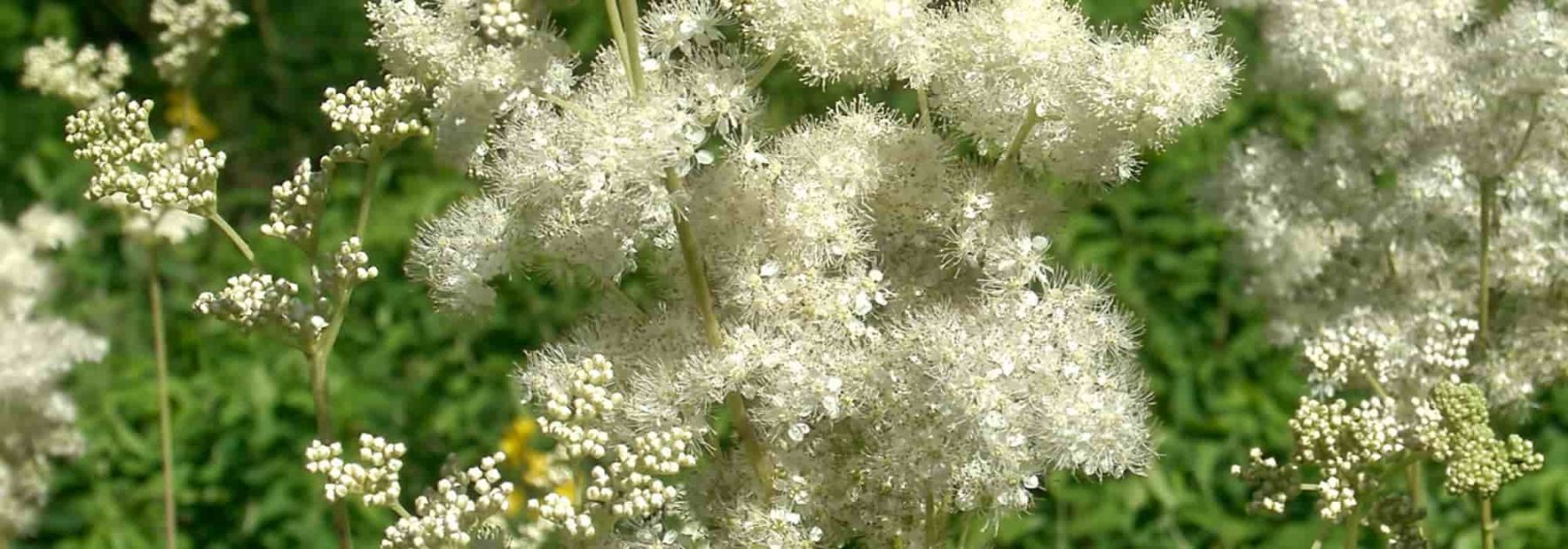
Meadowsweet: a beautiful and useful medicinal plant
Its benefits and uses
Contents
Meadowsweet (Filipendula ulmaria) is increasingly making its way into gardens, both for its beauty and its medicinal virtues. This perennial plant, typical of wet meadows and stream banks, charms with its light and fragrant flowering, while offering interesting natural properties. Cultivating meadowsweet allows you to combine the useful with the pleasant: it elegantly structures borders while providing flowers known to be rich in active principles used for centuries in herbal medicine.
Discover this precious plant in your outdoor spaces to enjoy its beauty and benefits through simple uses such as meadowsweet tea.
Introduction to Meadowsweet
Filipendula ulmaria, the queen of the meadows with health benefits
It is mainly this variety, Filipendula ulmaria, that is harvested to prepare infusions, decoctions, or herbal teas of queen of the meadows. The flowers are said to contain salicylates, compounds related to salicylic acid (aspirin), known for their analgesic and anti-inflammatory effects. Since antiquity, it has been one of those traditional plants cultivated for both its ornamental qualities and its medicinal interest.
Easy to cultivate, hardy and robust, it offers large white to cream floral spikes in summer, delicately scented, swaying in the breeze and structuring the flower beds. Its deeply lobed, dark green leaves create a lush backdrop that highlights its airy blooms while attracting butterflies, bees, and other garden pollinators.
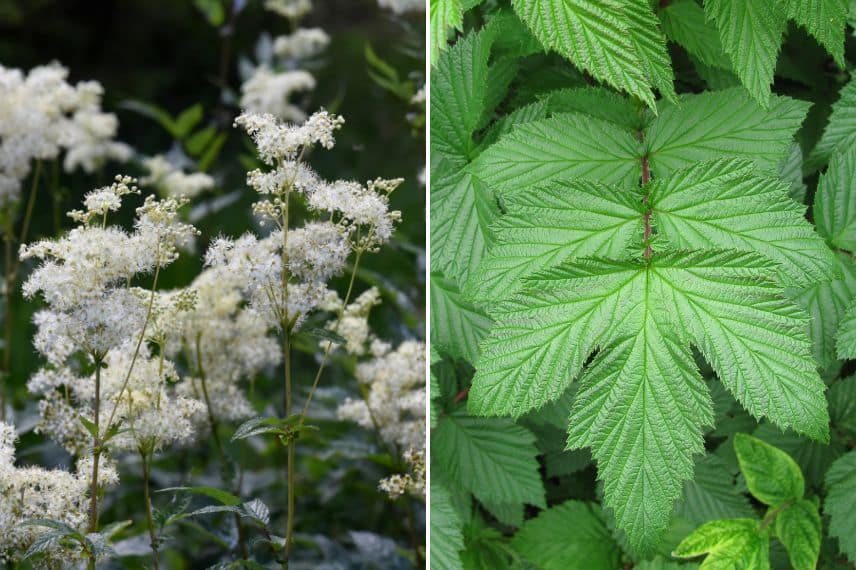
Flowers and leaves of Filipendula ulmaria
Other queens of the meadows to enhance the garden
While Filipendula ulmaria is the most famous for its benefits, other species of the genus Filipendula are appealing for their ornamental interest. They enrich the flower beds by adding structure, lightness, and soft colours.
Among the most interesting:
- Filipendula rubra ‘Venusta’, a spectacular variety of queen of the meadows, reaching up to 1.80 m tall, with its large soft pink inflorescences, ideal for the back of a border.
- Filipendula purpurea, more compact, it brings colour to the garden with its fuchsia pink flowers.
- Filipendula ulmaria ‘Plena’, which retains the medicinal benefits of the classic queen of the meadows while offering double flowers of very decorative frothy white.
These varieties allow for the creation of varied and natural scenes, where the plants integrate harmoniously into the ornamental garden. Also, discover our other varieties of queen of the meadows and to learn more about its cultivation, read our sheet: “Filipendula, Queen of the Meadows: planting and caring for.”
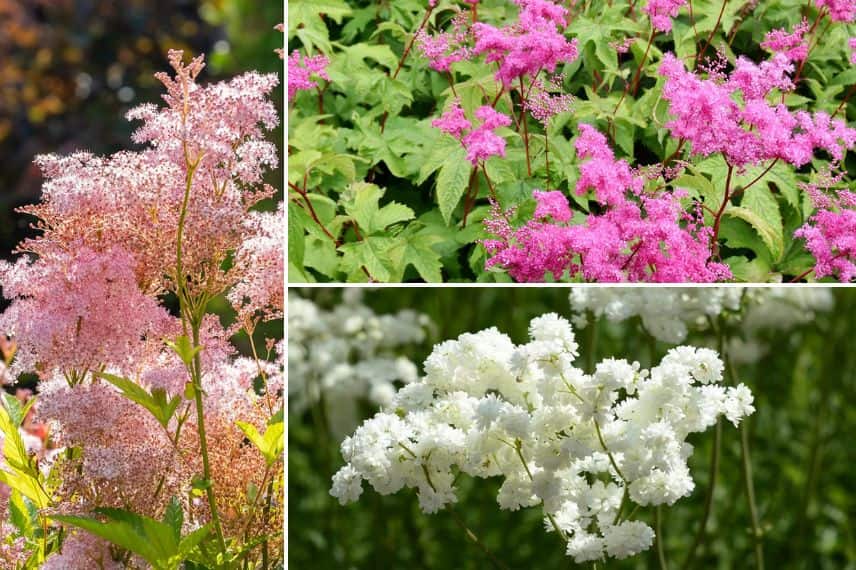
Filipendula rubra ‘Venusta’, Filipendula purpurea and Filipendula ulmaria ‘Plena’
How to use meadowsweet?
Harvesting the flowers and flowering tops of meadowsweet
The parts used from meadowsweet are its light and fragrant inflorescences. Harvesting is preferably done in dry weather, between June and July, when the flowers begin to open, a time when their concentration of aromatic compounds is at its highest.
The flowering tops are cut using scissors or pruning shears. These flowers can be used fresh or dried to prepare infusions or macerations.
How to dry meadowsweet flowers?
To preserve meadowsweet flowers, the simplest method is air drying.
- Harvest the flowers in dry weather.
- Lay them flat on a clean cloth or hang them in small bunches, out of direct sunlight, in a dry and well-ventilated place.
- The drying process takes about a week, until the flowers are crisp to the touch.
- Once dried, the flowers can be stored for several months in an airtight jar, away from moisture and light, ready to be used in meadowsweet tea.
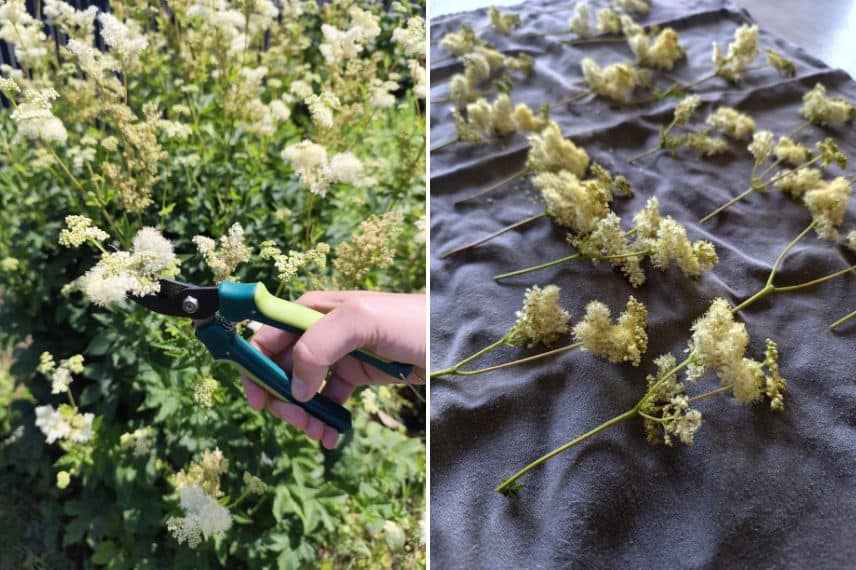
Harvesting and drying meadowsweet flowers
Preparing a meadowsweet infusion
Meadowsweet tea is the most common use. To make it:
- Use 2 to 3 grams of dried flowers, which is equivalent to a tablespoon, or double that amount for fresh flowers.
- Pour 250 ml of boiling water, then let it steep for 10 minutes.
- Strain before consumption.
This preparation is traditionally appreciated for occasional use (which should not exceed 5 to 7 consecutive days) to promote drainage or contribute to joint comfort. It is recommended to seek medical advice before use, especially in cases of specific health conditions or ongoing treatments.
The flowers can also be included in infusion blends with other garden plants, such as mint, lemon balm, or yarrow, to vary the pleasures at the heart of a health garden.
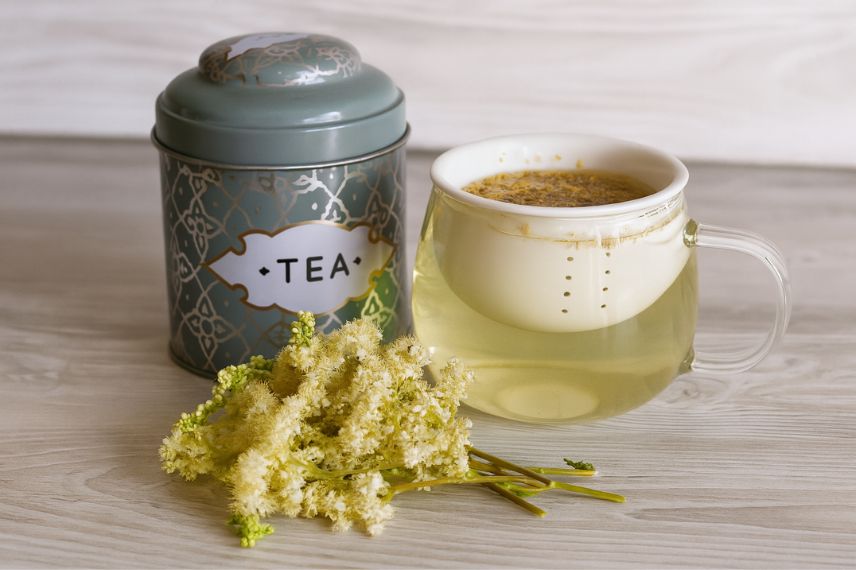
Meadowsweet infusion
Quels sont les bienfaits de la Meadowsweet?
Meadowsweet, or Filipendula ulmaria, has been known for centuries for its traditional uses related to pain relief and the stimulation of elimination functions. It is said to naturally contain salicylates, molecules related to salicylic acid, which have prompted extensive research and are the basis of modern aspirin.
In herbal medicine, its flowering tops are used to:
- Assist renal elimination and water retention.
- Provide support for joint and muscle discomfort.
- Induce a feeling of relaxation thanks to its sweet and herbaceous aromas.
What are the side effects and contraindications of Meadowsweet?
Like any medicinal plant, Meadowsweet should be used with caution. Its richness in salicylates means that it is not recommended for individuals allergic to aspirin derivatives or those on anticoagulant treatment.
It is also contraindicated:
- In children and adolescents, unless advised by a doctor.
- During pregnancy and breastfeeding.
- In cases of gastric ulcers or a history of significant digestive disorders.
Before considering the regular use of meadowsweet herbal teas, it is advisable to consult your doctor, especially if you are already undergoing medical treatment.
Meadowsweet herbal tea should be used in a short course of 5 to 7 days maximum, at a rate of 1 to 3 cups per day. It is recommended for occasional use.
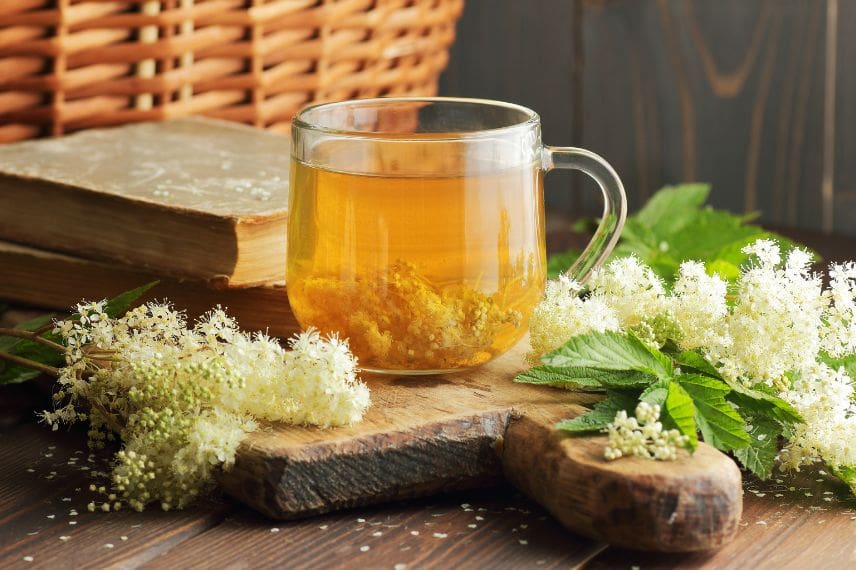
Did you know? Meadowsweet is the origin of aspirin.
Iconic plant of wetland areas, meadowsweet has long been considered sacred by Celtic populations, who associated it with rituals related to nature and purification.
Meadowsweet, just like white willow (Salix alba), contains salicylic derivatives, compounds found particularly in its flowers and roots. It is from its root that researchers extracted salicylic acid. The molecule was then reproduced in the laboratory at the end of the 19th century, giving rise to aspirin as we know it today. Its name is indeed directly linked to the former botanical name of meadowsweet: Spiraea ulmaria.
Thus, behind this unassuming garden plant lies one of the great pharmaceutical advancements of modern times.
- Subscribe!
- Contents
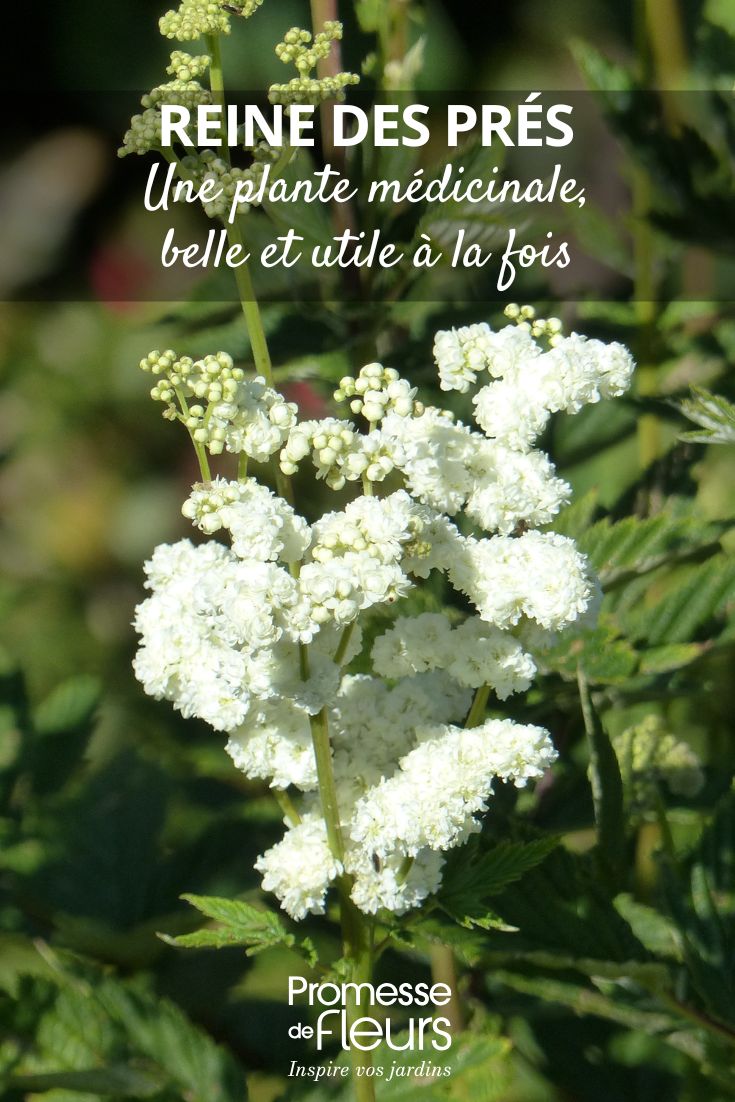




































Comments